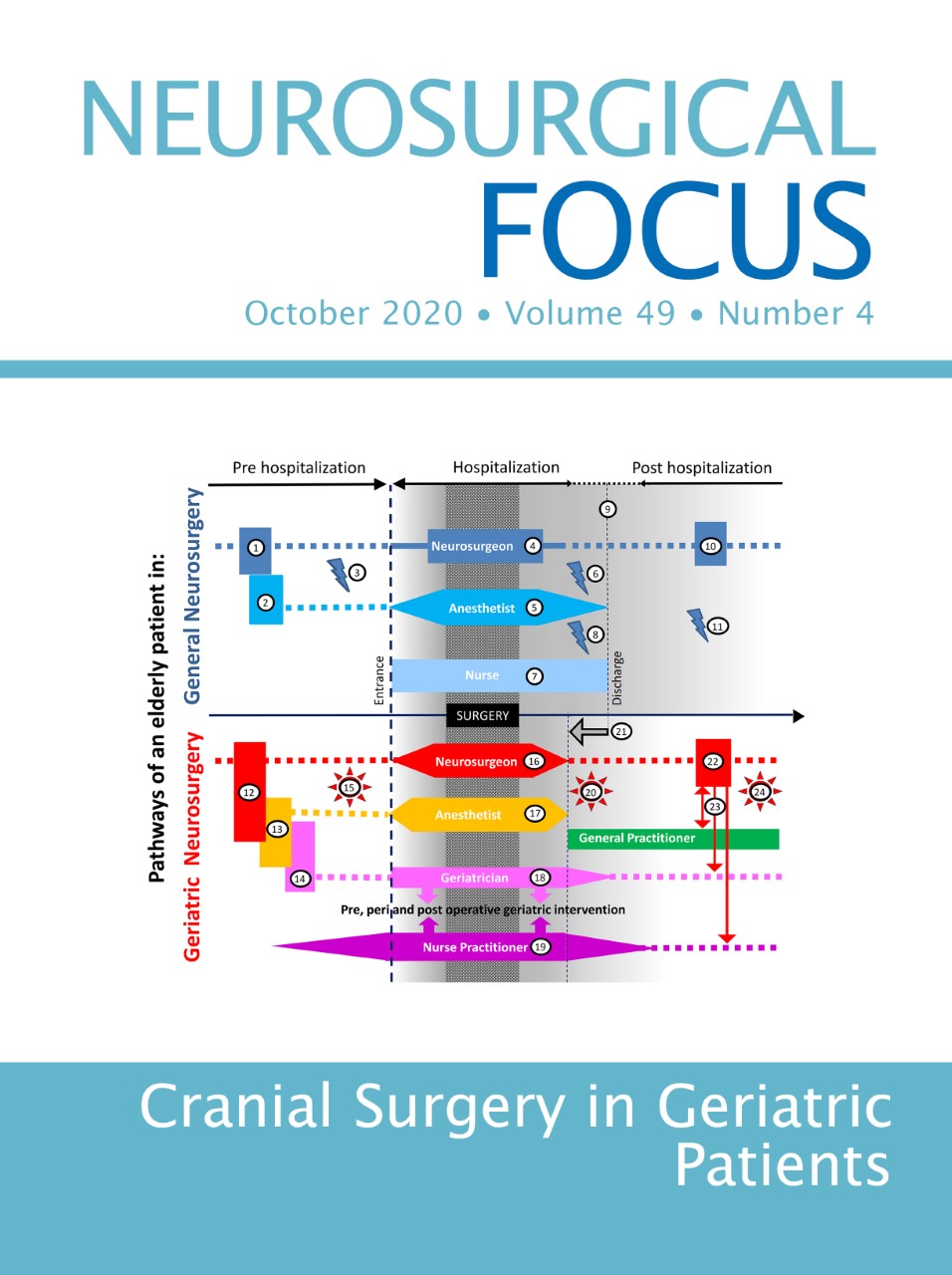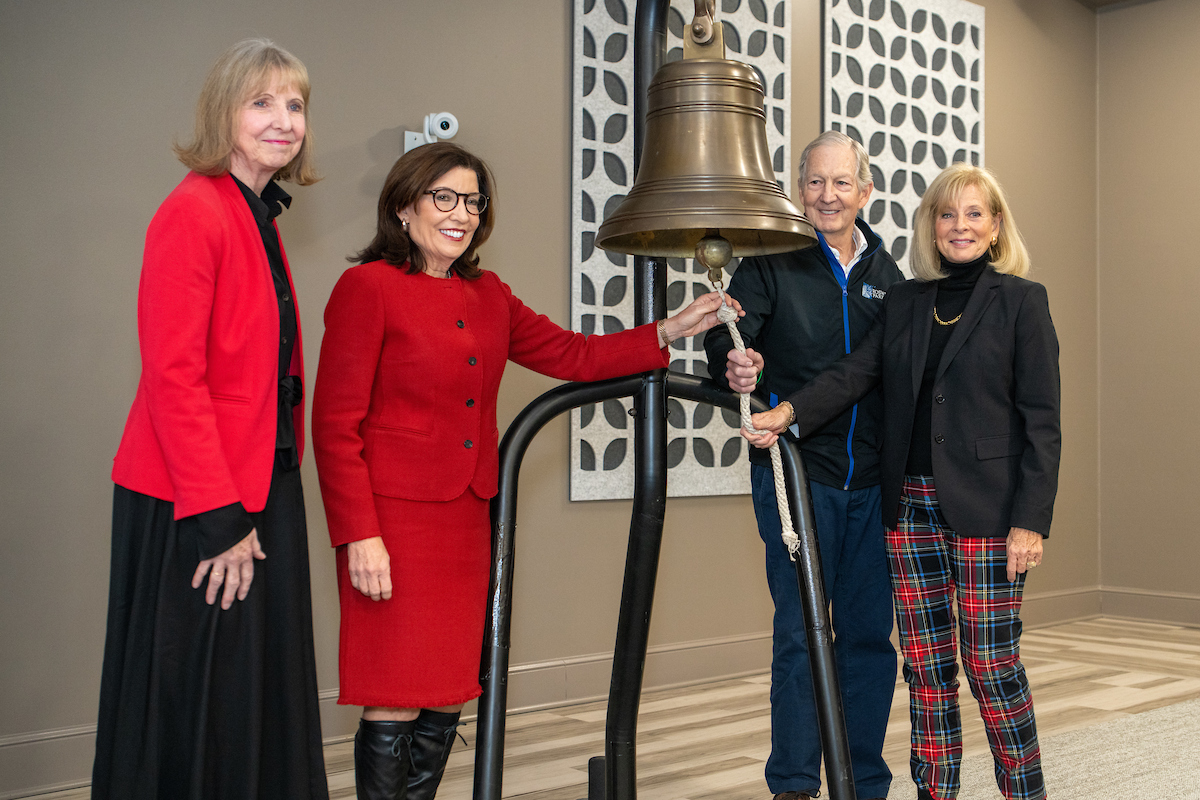Topic Editors: Mark G. Hamilton, Ian Parney, Odette A. Harris, Eric A. Schmidt, and Howard A. Riina
The world’s population is steadily growing older, and neurosurgeons are treating greater numbers of geriatric patients. These patients may present with many of the diseases and disorders of younger neurosurgical patients, but their treatment can pose different challenges because older patients may experience age-related changes in brain physiology, fragility, and/or comorbidities. They also may have neurological disorders that are specifically associated with advanced age.
A variety of topics as they relate to older patients are covered in this issue: cranial tumors, arteriovenous malformations, chronic subdural hematoma, idiopathic normal pressure hydrocephalus, trigeminal neuralgia, and acute traumatic brain injury, to name a few. Ethical issues arising when treating geriatric patients are discussed, as are various expectations for neurosurgical outcomes. One editorial calls for the creation of a new surgical subspecialty: geriatric neurosurgery.
The following articles can be found in the October issue:
- “Introduction: Cranial surgery in geriatric patients” by Mark G. Hamilton et al.
- “Editorial: Geriatric neurosurgery: the unfolding of a new subspecialty” by Eric Schmidt et al.
- “Ethical issues in geriatric cranial neurosurgery” by Laureen D. Hachem and Mark Bernstein
- “Editorial: Daily neurosurgical experiences with ethics and the elderly” by Mark G. Hamilton
- “Middle meningeal artery embolization treatment of nonacute subdural hematomas in the elderly: a multiinstitutional experience of 151 cases” by Evan Joyce et al.
- “Drain type after burr-hole drainage of chronic subdural hematoma in geriatric patients: a subanalysis of the cSDH-Drain randomized controlled trial” by Ladina Greuter et al.
- “To drill or not to drill, that is the question: nonsurgical treatment of chronic subdural hematoma in the elderly. A systematic review” by Alba Scerrati et al.
- “Risk factors, comorbidities, quality of life, and complications after surgery in idiopathic normal pressure hydrocephalus: review of the INPH-CRasH study” by Hanna Israelsson et al.
- “Surgical selection and outcomes among elderly patients with brain arteriovenous malformations” by Jan-Karl Burkhardt et al.
- “Blunt cerebrovascular injury in the geriatric population” by Diana T. Le et al.
- “Incorporating genomic signatures into surgical and medical decision-making for elderly glioblastoma patients” by Chibawanye I. Ene et al.
- “Magnetic resonance–guided laser interstitial thermal therapy for brain tumors in geriatric patients” by Elizabeth E. Ginalis and Shabba F. Danish
- “Is age an additional factor in the treatment of elderly patients with glioblastoma? A new stratification model: an Italian Multicenter Study” by Tamara Ius et al.
- “Impact of frailty on surgery for glioblastoma: a critical evaluation of patient outcomes and caregivers’ perceptions in a developing country” by Varidh Katiyar et al.
- “The role of frailty in geriatric cranial neurosurgery for primary central nervous system neoplasms” by Shane Shahrestani et al.
- “Frailty predicts worse outcomes after intracranial meningioma surgery irrespective of existing prognostic factors” by Brianna C. Theriault et al.
- “Minimally invasive surgical treatment of intracranial meningiomas in elderly patients (≥ 65 years): outcomes, readmissions, and tumor control” by Jai Deep Thakur et al.
- “Resection of meningiomas in octogenarians: a comparison with a younger geriatric population” by Marco V. Corniola et al.
- “Clinical characteristics and outcomes in elderly patients undergoing transsphenoidal surgery for nonfunctioning pituitary adenoma” by Matheus P. Pereira et al.
- “A population-based study of fall-related traumatic brain injury identified in older adults in hospital emergency departments” by Michael D. Cusimano et al.
- “Acute subdural hematoma in the elderly: outcome analysis in a retrospective multicentric series of 213 patients” by Gianluca Trevisi et al.
- “Morbidity and mortality in elderly patients undergoing evacuation of acute traumatic subdural hematoma” by Panagiotis Kerezoudis et al.
- “Long-term pain outcomes in elderly patients with trigeminal neuralgia: comparison of first-time microvascular decompression and stereotactic radiosurgery” by Kunal P. Raygor et al
Please join us in reading the October issue of Neurosurgical Focus and keep abreast with the latest information on cranial surgery in geriatric patients.
***
Neurosurgical Focus, an online-only, monthly, peer-reviewed journal, covers a different neurosurgery-related topic in depth each month and is available free to all readers at http://www.thejns.org. Enhanced by color images and video clips, each issue constitutes a state-of-the-art “textbook chapter” in the field of neurosurgery. Neurosurgical Focus is one of five journals published by the JNS Publishing Group, the scholarly journal division of the American Association of Neurological Surgeons. Other peer-reviewed journals published by the JNS Publishing Group each month include the Journal of Neurosurgery, the Journal of Neurosurgery: Spine, the Journal of Neurosurgery: Pediatrics, and Neurosurgical Focus: Video. All five journals can be accessed at www.thejns.org.
Founded in 1931 as the Harvey Cushing Society, the American Association of Neurological Surgeons (AANS) is a scientific and educational association with more than 10,000 members worldwide. The AANS is dedicated to advancing the specialty of neurological surgery in order to provide the highest quality of neurosurgical care to the public. All active members of the AANS are certified by the American Board of Neurological Surgery, the Royal College of Physicians and Surgeons (Neurosurgery) of Canada, or the Mexican Council of Neurological Surgery, AC. Neurological surgery is the medical specialty concerned with the prevention, diagnosis, treatment, and rehabilitation of disorders that affect the entire nervous system including the brain, spinal column, spinal cord, and peripheral nerves. For more information, visit www.AANS.org.




